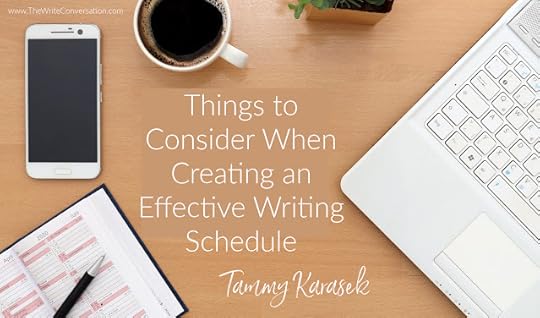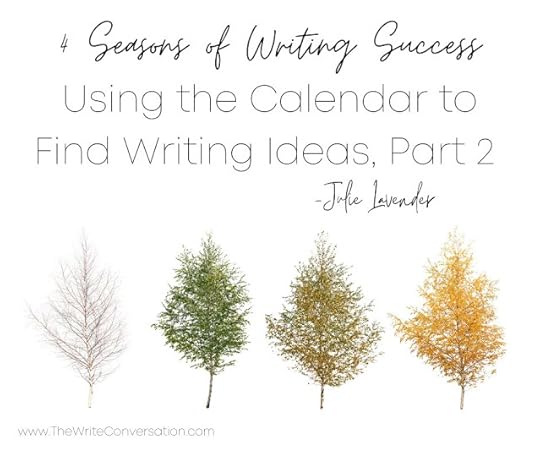Edie Melson's Blog, page 110
October 21, 2022
The Character Arc: Six Primary Reasons Why theCharacters You Write Must Change and Grow

by Zena Dell Lowe @ZenaDellLowe
Every story is ultimately about your character's inner transformation. By the end of the story, we expect to see someone who has fundamentally changed over the course of the telling. Plot is just what unfolds according to the choices a character makes in pursuit of some primary objective. But what matters most is your main character’s inner emotional journey, which unfolds according to the unresolved needs and trauma wounds of a character—whatever plagues his or her heart most.
6 Reasons Characters Must Grow
1. The heart of every story is a personal paradox.
If your main character is a former marine whose entire team was killed under his command, he’s going to suffer terrible guilt and shame even if he wasn’t responsible for their deaths. So, while the plot may center around stopping a terrorist attack on the Sears Tower, the real story is about a man who doesn’t want to lead this mission but who must anyway because he’s the only one who can win. He enters the battle with no confidence in himself, afraid to make hard choices for fear of losing even more men, and yet now even more lives are relying on him. The stakes are high enough that he has no choice but to face his inner demons, and that is why it's a personal paradox. At the end of the day, plot is simply a device that forces the character to face their greatest fears, and thereby allows them to grow.
2. This struggle mirrors our own experience.
Ultimately, your main character must work through issues and overcome fears so that they can step into the person they were always meant to be. This type of journey inevitably creates a bridge to readers because it’s something we can all understand on an intuitive level. As we live out our own lives, we're basically trying to accomplish the same thing, even if on a subconscious level. Like our characters, we must come to terms with our hurts, our rejections, our defects of character, our sufferings, etc., so that we can become our best selves.
3. All human beings are driven by the same primal needs, though not all of us are aware of it.
To be human is to constantly long for deep, intimate connection with other human beings. But also, at the same time, we suffer from a deep fear that we are not enough, that we won't measure up, that others will see that we are lacking. And herein lies the constant struggle of the human condition. We long to be known and we're terrified to be known at one and the same time. And every single one of our stories can be traced back to this internal conflict within ourselves. When we pursue things like money, power, sex, relationships, success—all of these things are just our way of trying to attain the original desire. We come to believe that if we have these things, we will be more desirable, more acceptable, more worthy of other people's love. In fact, one of the hardest things to overcome as a human being is our persistent belief that love must be earned, that if we were only smart enough, or rich enough, or good enough, or pretty enough, or skinny enough, or clever enough, or whatever other quality that we've identified ourselves as lacking, then we will finally be able to receive the love and acceptance that we really need, because we will finally be enough.
4. Characters do what we’re too afraid to do, and on a subconscious level, we're watching to see if it works.
The reason we connect with characters emotionally is that on some level, we know that they are doing what we need to do, or what we want to do but are too afraid to do, lest we fail and find ourselves rejected. So, we’re living through them vicariously in the hopes that we will someday be able to adopt and and implement such frightening techniques in our lives. Their example comforts us because it affirms we're not alone. It inspires us and gives us courage to take action. It gives us hope that true connection and intimacy are possible, which makes us want those things all the more. We connect to characters because we know that we need the same courage that they do to become the person that we were always meant to become.
5. As in real life, we expect people to be transformed by hardship.
Furthermore, characters must grow and change in the face of hardship because this is what happens in real life. Suffering changes people. Hardship transforms us–sometimes for the better, sometimes for the worse. To live is to suffer. Everyone suffers. Suffering is the great equalizer. Suffering is defined as an anguishing experience, which severely affects a person at a psychophysical and existential level. To be affected by it means that we cannot help but to be changed by it in some fundamental way. Our suffering shows up in our lives. It manifests itself in the quality of our relationships to God, to others, and to ourselves. It impacts our bodies as well as our souls. As trauma expert Bessel van der Kolk notes in his book, The Body Keeps the Score, trauma impacts the body on a physiological level. People cannot go through a crucible of suffering and expect to come out unscathed. Pain changes people.
In America, we've adopted this notion that suffering should be avoided at all costs. Even if we know it isn't possible to avoid it, or that it isn't even the best practice, the truth is, most of us live our lives trying to avoid anything that might cause us pain. A lot of dysfunctional and unhealthy behaviors emerge from this practice. For example, if it makes us feel uncomfortable to tell the truth, we lie. If it feels unpleasant to address someone else's behavior, we avoid. If it's too scary to share how we really feel, we withdraw. Whatever it takes to avoid the possibility of experiencing pain. But what if suffering wasn't meant to be avoided? What if suffering was, as Mother Teresa claimed, a true gift from God?
6. At the end of the day, every single story is a story about suffering.
This is your gift to the world. Storytellers are on the front lines of the battle for the hearts and minds of the people because we deal with one of the primary issues of mankind—the problem of suffering—which means your work as a storyteller is important.
So, if you’re a storyteller, stop feeling guilty about practicing your craft. Recognize the importance of your great calling. Story is what helps us make sense of our suffering. And entertainment time is not throwaway time. As Josef Pieper argued, leisure is the basis for culture because it allows for times of contemplation. It’s the basis of culture because in it, we find meaning that then animates the rest of our mostly mundane lives. If we didn't have our escape to entertainment, we would see fewer acts of heroism, courage, or goodness in the real world. Stories inspire us to greatness. They challenge us to be better than we are. So, we need to change our minds about the importance of our work. Entertainment time is not throwaway time. It is the work between the work that allows us to search our hearts and find truth, and all truth leads to God.
TWEETABLEThe Character Arc: Six Primary Reasons Why the Characters You Write Must Change and Grow, tips from @ZenaDellLowe on @EdieMelson (Click to Tweet)
 Zena has worked professionally in the entertainment industry for over 20 years as a writer, producer, director, actress, and story consultant. Zena also teaches advanced classes on writing all over the country. As a writer, Zena has won numerous awards for her work. She also has several feature film projects in development through her independent production company, Mission Ranch Films. In addition to her work as a filmmaker, Zena launched The Storyteller’s Mission with Zena Dell Lowe, a podcast designed to serve the whole artist, not just focus on craft. In 2021, Zena launched The Storyteller’s Mission Online Platform, where she offers advanced classes and other key services to writers. Zena loves story and loves to support storytellers. Her passion is to equip artists of all levels to achieve excellence at their craft, so that they will truly have everything they need to change the world for the better through story.
Zena has worked professionally in the entertainment industry for over 20 years as a writer, producer, director, actress, and story consultant. Zena also teaches advanced classes on writing all over the country. As a writer, Zena has won numerous awards for her work. She also has several feature film projects in development through her independent production company, Mission Ranch Films. In addition to her work as a filmmaker, Zena launched The Storyteller’s Mission with Zena Dell Lowe, a podcast designed to serve the whole artist, not just focus on craft. In 2021, Zena launched The Storyteller’s Mission Online Platform, where she offers advanced classes and other key services to writers. Zena loves story and loves to support storytellers. Her passion is to equip artists of all levels to achieve excellence at their craft, so that they will truly have everything they need to change the world for the better through story.To find out more about Zena or her current courses and projects, check out her websites at WWW.MISSIONRANCHFILMS.COM and WWW.THESTORYTELLERSMISSION.COM
Published on October 21, 2022 22:00
October 20, 2022
Ending the Stories You Write with Hope, not just Happily-Ever-After

by Crystal Bowman
Everyone knows how fairytales end: And they all lived happily ever after. It’s the perfect ending for fantasy stories—where frogs turn into princes, and mice and pumpkins turn into horse-drawn carriages. Anything can happen in fantasy and fiction, where magical stories delight readers young and old. But in real-life stories, devotions, or realistic fiction, “Happily ever after” may not be the right way to end your story.
In one of my I Can Read! stories, Jake, a lop-eared rabbit, is frustrated because he can’t hit the ball when he swings his bat. He tries and tries with no success, until his friend gets bored and goes home. Jake’s grandma comes to the rescue and through a series of comical events, she finally teaches Jake to hit the ball. Now let’s jump to the ending.
My original version was: After dinner, Jake played baseball with his family, and Jake hit the ball every time. On second thought, I decided that not only is it unrealistic to hit a baseball every time (even in the pros), but it also gives kids a false hope that if they practice, they will be 100% successful. So, I added a six-letter word that changed everything: After dinner, Jake played baseball with his family, and Jake hit the ball almost every time. With the addition of that one word, the story has a satisfying, but more realistic (and slightly humorous) conclusion.
A few years ago, I wrote a picture book about a boy who has a grandma with dementia—a tough topic to tackle. I Love You to the Stars, When Grandma Forgets, Love Remembers was published in 2020. As Grandma’s disease progresses, she moves to an assisted living home. At the end of the story, the boy, his mother, and Grandma’s dog spend happy times with Grandma at her new home. When it’s time to leave, the boy whispers the special rhyme Grandma always whispered to him at bedtime. It’s a sweet ending to a sad story and leaves the reader with both a smile and a tear.
In writing devotions for kids, I’ve learned that when I get to the end, I should not make a statement that gives false hope or a promise that’s not found in Scripture. One of my devotions began with a child going for a walk and watching the squirrels run away. The message in the devotion was about giving your worries and cares to God. My conclusion was: When you give your problems and worries to God, they will run away from you just like the squirrels. But on second thought—that’s not what the Bible says. 1 Peter 5:7 says, Cast all your anxiety on him because he cares for you. It doesn’t say, Cast all your anxiety on him because he will make your problems run away.
And in Philippians 4:6-7 we read, Do not be anxious about anything, but in every situation, by prayer and petition, with thanksgiving, present your requests to God. And the peace of God, which transcends all understanding, will guard your hearts and your minds in Christ Jesus. The promise is peace, not a problem-free life. So, I ended my devotion this way: You can talk to God about your problems and your worries, because He loves you and cares about you, just like he cares about the squirrels.
Novels are another genre with critical endings. I do not write them (because I can’t), but I have noticed that in a series, authors often end their books with a tease that will make you want to read the next one. Brilliant!
As we write our stories or devotions, we need to remember that there are no perfect endings on earth. But when we get to heaven, we will all live happily ever after.
TWEETABLEEnding the Stories You Write with Hope, not just Happily-Ever-After, thoughts from author Crystal Bowman on @EdieMelson (Click to Tweet)
 Crystal Bowman is an award-winning, bestselling author of more than 100 books for children and four nonfiction books for women. She also writes lyrics for children’s piano music and is a monthly contributor to Clubhouse Jr. Magazine. She loves going to schools to teach kids about poetry. She also speaks at MOPS (Mothers of Preschoolers) groups and teaches workshops at writers’ conferences. When she is not writing or speaking, she enjoys going for walks, working out at the gym, and eating ice cream. She and her husband live in Michigan and have seven huggable grandkids.
Crystal Bowman is an award-winning, bestselling author of more than 100 books for children and four nonfiction books for women. She also writes lyrics for children’s piano music and is a monthly contributor to Clubhouse Jr. Magazine. She loves going to schools to teach kids about poetry. She also speaks at MOPS (Mothers of Preschoolers) groups and teaches workshops at writers’ conferences. When she is not writing or speaking, she enjoys going for walks, working out at the gym, and eating ice cream. She and her husband live in Michigan and have seven huggable grandkids. WWW.CRYSTALBOWMAN.COMWWW.FACEBOOK.COM/CRYSTAL.BOWMANWWW.FACEBOOK.COM/CRYSTALJBOWMANWWW.INSTAGRAM.COM/CRYSTALBOWMANAUTHOR
Published on October 20, 2022 22:00
October 19, 2022
Create A Free Holiday Gift Sure to Wow Your Email Subscribers
Edie here. I'm so excited to introduce you to my friend Patricia Durgin. Many of you already know her as an idea machine for writers and marketing. Now she'll be a regular guest here on The Write Conversation!!! Be sure to give her a warm TWC welcome!

Create A Free Holiday Gift Sure to Wow Your Email Subscribersby Patricia Durgin @PatriciaDurgin
Though it's October, you may already have the holidays in mind: family gatherings, church socials, Thanksgiving parades and Christmas concerts. Makes me feel warm inside thinking about it. You, too?
Presents are part of this season. Have you considered giving your email readers a free holiday gift?
A great way to deepen your connection to your subscribers is to send them a valuable gift, whether they're a new or long-time reader. It can be in a PDF, video, or audio format.
The present doesn't have to be elaborate, but it can be. It might be as simple as a one-page guide or as detailed as a 20-page PDF. But think twice about sending a resource--even if it's free--with more than four to six pages. And limit audio or video recordings to 5-7 minutes. Your readers, like mine, are busy, and getting busier each day as the holidays near, so a short, uber-helpful gift is more likely to be read, and thus appreciated.
If you're sending a multiple page PDF, consider making the first page the title page, the second a short About the Author page, next the content page(s) and ideally, the last page will invite them to take a non-monetary action: join your FB group, listen to your latest podcast, add their info to a Wait List for a future event, or something similar.
All in a friendly tone, not a hard-hitting promotion. The goal for this gift is for your audience to feel more deeply connected to you. Promote your products some other time.
This is a Lead Magnet with one key difference: the recipients are already on your email lists. So, they won't need to sign up to receive it. It's a simple way to thank them and wish them well for the holidays.
It's important to send them content they want rather than what you think they need.
But how can you know what they want? Because you've already experienced what they're experiencing now, or something similar, and Christ guided you to safety.
Then He called you to share your story, which is part of His larger story. Both resonate with your God-ordained audience. You've felt their fears, asked their questions, and waited for God to deliver you, just like they're waiting now. You know them in ways that an arm-chair expert never will.
Let's Brainstorm Some Content and Title Ideas
More readers will open your digital gift if it's titled well and if it answers a question or solves a problem they have or foresee having before, during, or after the holidays.
What problem might your audience likely have between Thanksgiving and the New Year? If the word "problem" stumps you, replace it with "challenge," "obstacle," "struggle," or "complication."
Move on to an idea for your content, then create a title that fits. Enjoy this fun exercise.
Ideas for Writers to Create a Gift of Your Subscribers
Audience: Recently divorced men or women
Potential Problem: Family get-togethers dredge up old, painful conversations
Content Idea: How to skip family gatherings without burning bridges
Suggested Title: Surviving Your First Christmas After Divorce
***
Audience: Newly marrieds hosting their first holiday party
Potential Challenge: Culinary disasters due to lack of cooking skills
Content Idea: Entree and dessert recipes easy to make ahead
Suggested Title: Cook a Fabulous Make-Ahead Holiday Meal
***
Audience: Flea market shoppers
Potential Obstacle: Giving great gifts on a tight budget
Content Idea: Share multiple ways to stretch $10 at a flea market
Suggested Title: 25 Flea Market Gift Ideas for $10 or Less
***
Audience: Parents of children fighting cancer
Potential Complication: Child's surgery may keep him or her in the hospital
Content Idea: Suggest 15 ways to have fun even while confined to a sick bed
Suggested Title: Have a Fun Christmas Even If Your Child Is In the Hospital: 15 Games
***
Audience: Christian writers and speakers
Potential Struggle: Need a way to celebrate the holidays with their email readers
Content Idea: Explain how to create a free gift that their audience will appreciate
Suggested Title: A Free Holiday Gift Sure to Wow Your Email Subscribers
***
Additional Thoughts & TipsYour audience and their needs may be vastly different than the examples above. No matter. The process will work for any audience at any time of the year because human beings face challenges every day. Write content that solves a single problem or answers a single question. Keep it tight. No e-books allowed!
Shape your title so it's the opposite of your audience's problem / challenge / need / obstacle. Then make it interesting by adding a specific number if possible. Readers love titles that include numbers!
Above all, your title should offer a promised result, not simply information.
For example, Surviving Your First Christmas After Divorce contains a promise, whereas a more boring version might be Your First Christmas After Divorce. Adding the word "surviving" to the title makes the title a promise and not simply information. So similar and yet so different!
Christmas On A Budget implies a promise but 25 Flea Market Gift Ideas for $10 or Less is much clearer plus it's a concrete promise. See the difference? Your audience will!
Remember to keep your PDF short--eight total pages or less--with lots of visuals and "white space," a design term meaning "empty space." This gives the reader a visual break. They'll read more pages with white space included than if your PDF is jammed full of text with few or no interesting photos or graphics.
Your audience is already thinking of the holidays, pondering potential obstacles and how to avoid them.
Create a short, visually interesting gift in PDF format or a video or audio. Give it a promise driven title and fill it with practical advice to help their holidays be a little bit smoother or more enjoyable.
Send it with your thanks and well wishes for their holiday season.
Connecting with your audience person-to-person takes the relationship to a deeper level. And that's always a good thing!
TWEETABLECreate A Free Holiday Gift Sure to Wow Your Email Subscribers, tips from @PatriciaDurgin on @EdieMelson (Click to Tweet)
 Patricia Durgin loves clarity! It's her honor to serve Christian writers and speakers who are on fire for Jesus but who—whether beginners or advanced—lack the clarity to market their message beyond their family and friends. As a recognized marketing coach and strategist, Patricia serves via one-on-one and small group coaching, online courses, and a private Facebook group for Christian communicators. She contributes monthly columns to The Write Life, Almost an Author, and as of this article, The Write Conversation. Yay!
Patricia Durgin loves clarity! It's her honor to serve Christian writers and speakers who are on fire for Jesus but who—whether beginners or advanced—lack the clarity to market their message beyond their family and friends. As a recognized marketing coach and strategist, Patricia serves via one-on-one and small group coaching, online courses, and a private Facebook group for Christian communicators. She contributes monthly columns to The Write Life, Almost an Author, and as of this article, The Write Conversation. Yay!
Though Patricia's vision impaired, Jesus sends her on grand adventures across the country, all to serve Him. Don't worry...He sends the help she needs. One day that might be you!
Connect with Patricia at MARKETERSONAMISSION.COM

Create A Free Holiday Gift Sure to Wow Your Email Subscribersby Patricia Durgin @PatriciaDurgin
Though it's October, you may already have the holidays in mind: family gatherings, church socials, Thanksgiving parades and Christmas concerts. Makes me feel warm inside thinking about it. You, too?
Presents are part of this season. Have you considered giving your email readers a free holiday gift?
A great way to deepen your connection to your subscribers is to send them a valuable gift, whether they're a new or long-time reader. It can be in a PDF, video, or audio format.
The present doesn't have to be elaborate, but it can be. It might be as simple as a one-page guide or as detailed as a 20-page PDF. But think twice about sending a resource--even if it's free--with more than four to six pages. And limit audio or video recordings to 5-7 minutes. Your readers, like mine, are busy, and getting busier each day as the holidays near, so a short, uber-helpful gift is more likely to be read, and thus appreciated.
If you're sending a multiple page PDF, consider making the first page the title page, the second a short About the Author page, next the content page(s) and ideally, the last page will invite them to take a non-monetary action: join your FB group, listen to your latest podcast, add their info to a Wait List for a future event, or something similar.
All in a friendly tone, not a hard-hitting promotion. The goal for this gift is for your audience to feel more deeply connected to you. Promote your products some other time.
This is a Lead Magnet with one key difference: the recipients are already on your email lists. So, they won't need to sign up to receive it. It's a simple way to thank them and wish them well for the holidays.
It's important to send them content they want rather than what you think they need.
But how can you know what they want? Because you've already experienced what they're experiencing now, or something similar, and Christ guided you to safety.
Then He called you to share your story, which is part of His larger story. Both resonate with your God-ordained audience. You've felt their fears, asked their questions, and waited for God to deliver you, just like they're waiting now. You know them in ways that an arm-chair expert never will.
Let's Brainstorm Some Content and Title Ideas
More readers will open your digital gift if it's titled well and if it answers a question or solves a problem they have or foresee having before, during, or after the holidays.
What problem might your audience likely have between Thanksgiving and the New Year? If the word "problem" stumps you, replace it with "challenge," "obstacle," "struggle," or "complication."
Move on to an idea for your content, then create a title that fits. Enjoy this fun exercise.
Ideas for Writers to Create a Gift of Your Subscribers
Audience: Recently divorced men or women
Potential Problem: Family get-togethers dredge up old, painful conversations
Content Idea: How to skip family gatherings without burning bridges
Suggested Title: Surviving Your First Christmas After Divorce
***
Audience: Newly marrieds hosting their first holiday party
Potential Challenge: Culinary disasters due to lack of cooking skills
Content Idea: Entree and dessert recipes easy to make ahead
Suggested Title: Cook a Fabulous Make-Ahead Holiday Meal
***
Audience: Flea market shoppers
Potential Obstacle: Giving great gifts on a tight budget
Content Idea: Share multiple ways to stretch $10 at a flea market
Suggested Title: 25 Flea Market Gift Ideas for $10 or Less
***
Audience: Parents of children fighting cancer
Potential Complication: Child's surgery may keep him or her in the hospital
Content Idea: Suggest 15 ways to have fun even while confined to a sick bed
Suggested Title: Have a Fun Christmas Even If Your Child Is In the Hospital: 15 Games
***
Audience: Christian writers and speakers
Potential Struggle: Need a way to celebrate the holidays with their email readers
Content Idea: Explain how to create a free gift that their audience will appreciate
Suggested Title: A Free Holiday Gift Sure to Wow Your Email Subscribers
***
Additional Thoughts & TipsYour audience and their needs may be vastly different than the examples above. No matter. The process will work for any audience at any time of the year because human beings face challenges every day. Write content that solves a single problem or answers a single question. Keep it tight. No e-books allowed!
Shape your title so it's the opposite of your audience's problem / challenge / need / obstacle. Then make it interesting by adding a specific number if possible. Readers love titles that include numbers!
Above all, your title should offer a promised result, not simply information.
For example, Surviving Your First Christmas After Divorce contains a promise, whereas a more boring version might be Your First Christmas After Divorce. Adding the word "surviving" to the title makes the title a promise and not simply information. So similar and yet so different!
Christmas On A Budget implies a promise but 25 Flea Market Gift Ideas for $10 or Less is much clearer plus it's a concrete promise. See the difference? Your audience will!
Remember to keep your PDF short--eight total pages or less--with lots of visuals and "white space," a design term meaning "empty space." This gives the reader a visual break. They'll read more pages with white space included than if your PDF is jammed full of text with few or no interesting photos or graphics.
Your audience is already thinking of the holidays, pondering potential obstacles and how to avoid them.
Create a short, visually interesting gift in PDF format or a video or audio. Give it a promise driven title and fill it with practical advice to help their holidays be a little bit smoother or more enjoyable.
Send it with your thanks and well wishes for their holiday season.
Connecting with your audience person-to-person takes the relationship to a deeper level. And that's always a good thing!
TWEETABLECreate A Free Holiday Gift Sure to Wow Your Email Subscribers, tips from @PatriciaDurgin on @EdieMelson (Click to Tweet)
 Patricia Durgin loves clarity! It's her honor to serve Christian writers and speakers who are on fire for Jesus but who—whether beginners or advanced—lack the clarity to market their message beyond their family and friends. As a recognized marketing coach and strategist, Patricia serves via one-on-one and small group coaching, online courses, and a private Facebook group for Christian communicators. She contributes monthly columns to The Write Life, Almost an Author, and as of this article, The Write Conversation. Yay!
Patricia Durgin loves clarity! It's her honor to serve Christian writers and speakers who are on fire for Jesus but who—whether beginners or advanced—lack the clarity to market their message beyond their family and friends. As a recognized marketing coach and strategist, Patricia serves via one-on-one and small group coaching, online courses, and a private Facebook group for Christian communicators. She contributes monthly columns to The Write Life, Almost an Author, and as of this article, The Write Conversation. Yay! Though Patricia's vision impaired, Jesus sends her on grand adventures across the country, all to serve Him. Don't worry...He sends the help she needs. One day that might be you!
Connect with Patricia at MARKETERSONAMISSION.COM
Published on October 19, 2022 22:00
October 18, 2022
5 Ways to Stay Inspired to Write

by Katy Kauffman @KatyKauffman28
Do you write only when you’re inspired? It’s hard to make ourselves sit down and write when creativity isn’t bubbling within our souls. I love to write when a feeling of inspiration sings in my heart, but there are times when I’m up against a deadline without any “music” humming inside me to draw from. What do we do?
Here are five ways to stay inspired to write. Which of these do you already practice, and which could be added to your writer’s regimen to stir your heart to write?
Find Your Writing Inspiration
1. Make part of your daily time with God not about ministry.
That sounds almost backwards, doesn’t it? In my quiet times, I like to study Scripture in preparation to write, but I know that at some point, I have to press pause on studying for a project, and I just need to be with God. Just me and Him. Thinking through Scripture together. I can take the passage I’ve been studying and pray through it, or I may read a friend’s blog post and pray through their Bible passage and application.
We are more than our ministries. Ministry—either through our writing or church work—is a significant part of our lives, but what really needs to drive us is our personal, heartfelt, close relationship with God. His heartbeat of love for people becomes our heartbeat, but more than anything, we’re called to love Him with all we are. That’s our driving force.
I’ve seen that if I make my quiet time always about ministry, I tend to prepare things for others to study and take in. But if I first study for myself, I find more sparkling treasures in each passage. So we need both! Time with God for our hearts to be joined more closely to His and time to study His Word in order to write about it.
2. When you feel stuck, watch your favorite movie.
Stories inspire us. Struggle, courage, and victory—we’re inspired by the characters who are willing to give their all to help someone else or save the day. If your favorite movie isn’t an action adventure (like mine is), you may be inspired by the characters who persevere, the ones who work through a personal hurt or overcome a challenge. You may like a good drama or romance in which good wins or love is found.
What’s your favorite movie? Why do you like it? I love the three newer Star Trek movies starring Chris Pine. They have it all—a gripping story line, high stakes, moving back-stories, awesome graphics, soul-stirring music, and a team that works together against impossible odds. (Oh, and it’s in space.)
When we’ve lost our feeling of inspiration, we can watch the movies or TV shows that stir within us the desire to be better, to do better. And we can be inspired by the good writing that makes those stories worth remembering.
3. Create a YouTube playlist of inspiring songs.
I named mine: Victory Playlist. The music I’ve found stirs within me the desire to trust God and to keep at what He’s given me to do. It focuses my mind and heart on God’s power and His goodness. What songs stir your soul to fight the good fight, keep the faith, and run your race (2 Timothy 1:7)? Create a playlist of them on the app of your choice, and listen to them if you need your mojo back.
4. Pick a relaxing hobby that gives your brain a change of pace.
Sometimes we just need a “brain break.” Do you like to walk outside, tend a garden, or make greeting cards? How about a little drawing or painting? I know your schedule may already be full, but if you haven’t done this yet, consider carving out time when you don’t have to “work.” You can just “be.” A change of pace can be as simple as watering flowers (and chasing away chipmunks) or walking in the neighborhood or at a park with a friend. It’s the brain breaks that help me finish my projects and feel like I gave them my best.
5. Remember why you started writing in the first place.
A blank screen can frustrate me. That little cursor blinking at me. When no words are coming. But when I remember why I am writing, warmth returns to my soul, and joy works in my heart to form words, then sentences, then paragraphs. Writing is a partnership with God, and when we remember why He called us to it, we’re better able to receive the ideas and outlines He has in mind for each piece of writing.
So don’t forget why you got started and where you’re headed. Our world is full of people who need God and His truth. Each of His writers acts as an outpost, a beacon, that shines His love and truth for the world to see. We may be tempted to let our light wane when the schedule is heavy or the words don’t come as easily. But if we ask God for help and take time to renew our spirits, we can continue with the assignments He gives us. The truth is worth sharing.
Which of these strategies have worked for you? Is there one you want to try? Tell us in the comments below, and don’t stop writing!
TWEETABLE5 Ways to Stay Inspired to Write, tips from @KatyKauffman28 on @EdieMelson (Click to Tweet)
 Katy Kauffman is an award-winning author, an editor of Refresh Bible Study Magazine, and a co-founder of LIGHTHOUSE BIBLE STUDIES. She loves connecting with writers and working alongside them in compilations, such as Feed Your Soul with the Word of God, Collection 1 which is a 2020 Selah Awards finalist. She also enjoys encouraging writers and giving writing tips in her monthly writers’ newsletter called THE LIGHTHOUSE CONNECTION.
Katy Kauffman is an award-winning author, an editor of Refresh Bible Study Magazine, and a co-founder of LIGHTHOUSE BIBLE STUDIES. She loves connecting with writers and working alongside them in compilations, such as Feed Your Soul with the Word of God, Collection 1 which is a 2020 Selah Awards finalist. She also enjoys encouraging writers and giving writing tips in her monthly writers’ newsletter called THE LIGHTHOUSE CONNECTION.In addition to online magazines, Katy’s writing can be found at CBN.COM, thoughts-about-God.com, and three blogs on writing. She loves to spend time with family and friends, create art and make crafts with her group MY ARTSY TRIBE, and tend the garden in the morning sun. She makes her home in a cozy suburb of Atlanta, Georgia. Connect with her on FACEBOOK and TWITTER.
Published on October 18, 2022 22:00
October 17, 2022
6 Tips to Move Ahead Even When You Don't Feel Like Writing

by Lynette Eason @LynetteEason
What do you do when you don’t feel like writing? Gasp! Not feel like writing? Is that even a real feeling?
Um…yes. Unfortunately, it happens. At least to me. Don’t get me wrong. I love what I do. I adore my job and the flexibility it affords me. Believe me, I don’t take it for granted. But I don’t wake up EVERY SINGLE day thinking, “Oh boy! I’m just so excited, I can’t wait to hit the keyboard!”
For those of you who do this, we are not friends and you can go away.
Just kidding.
Sort of.
Anyway, for those of you who are occasionally afflicted with this “I don’t want to write today” thing, I have a few helpful tips on how to get past that.
Things to do When You Don't Feel Like Writing
Sit down in front of your manuscript and edit. Sometimes when I edit, I’ll get a new idea to flesh out. That will generate some excitement about moving forward with the story.Get your voice recorder out and start brainstorming the next part of the story. Just start talking. It’s okay if you sound like an idiot, you’re the only one who will hear it.Do something physical. But read the last part of your manuscript before you go. Then while you’re working out or walking around the block, you can be thinking about the next scene, fleshing it out in your mind, getting it ready to be put on the screen.Email a brainstorming buddy and cry on his or her shoulder tell her the story in a stream of consciousness telling. Don’t stop to breathe, just talk. When you’re finished, say, “Now what happens?"Sit down in front of your manuscript and tell yourself you can’t get up until you write at 10 words. Yes. 10. Then you’re allowed to go do something fun. Because I can’t write just 10 words. I always write more. Granted, sometimes it’s 20, but at least I met my goal! Ha. Seriously, I’m willing to bet that would happen to you too.And last but not least, adopt the Nike slogan. “Just do it.” (Most necessary when deadlines loom.)
Yes, I know you think that that last one is not really the most helpful suggestion, but actually it is. I look at it this way. Everyone who has a job has days where he/she doesn’t want to go in to work. Writing is the same thing. It’s your job. Unless you’re sick or otherwise incapacitated, you go to work. Although I will say this, like some dedicated people (who are unappreciated in the office environment) sometimes you go to work when you’re sick. The good thing is that, at least if you’re a writer and you work from home, you won’t spread the yuck.
Honestly, I really do love writing. I’m very excited about each project God lets me work on. Like I said earlier, I don’t take it for granted that I get to do what I get to do. I’m not whining or complaining. I’m just being honest. Some days it’s just plain hard work and some days I’m just not in the mood to go to work. And that’s okay.
And I would like to also point out that these suggestions are great for pre-pubbed writers as well. You may not have publisher deadlines, but if you don’t get a manuscript finished…you won’t have publisher deadlines.
So, what are some other suggestions you could add to the list? What do you do when you MUST write and you just don’t want to? I can ALWAYS use more ideas!
TWEETABLE6 Tips to Move Ahead Even When You Don't Feel Like Writing, insight from author @LynetteEason on @EdieMelson (Click to Tweet)
 Lynette Eason is a lifelong resident of South Carolina and the best-selling, award-winning author of over sixty books including the Danger Never Sleeps series. Her books have appeared on the CBA, ECPA, and Publisher’s Weekly bestseller lists. She has won several awards including the Carol Award, the IRCC award, the Selah, and the Christian Retailing's Best Award. She placed in the top ten in the James Patterson 2016 co-writer contest and the movie, Her Stolen Past, based on Lynette’s novel with the same title, aired February 2, 2018 on the Lifetime Movie Network. Lynette, along with her husband, Jack, directs the annual Weekend With The Writers Conference (weekendwiththewriters.com) and is a member of a number of professional organizations, including ACFW and ITW. Lynette can be found online at www.lynetteeason.com and www.facebook.com/lynette.eason and @lynetteeason on Twitter.
Lynette Eason is a lifelong resident of South Carolina and the best-selling, award-winning author of over sixty books including the Danger Never Sleeps series. Her books have appeared on the CBA, ECPA, and Publisher’s Weekly bestseller lists. She has won several awards including the Carol Award, the IRCC award, the Selah, and the Christian Retailing's Best Award. She placed in the top ten in the James Patterson 2016 co-writer contest and the movie, Her Stolen Past, based on Lynette’s novel with the same title, aired February 2, 2018 on the Lifetime Movie Network. Lynette, along with her husband, Jack, directs the annual Weekend With The Writers Conference (weekendwiththewriters.com) and is a member of a number of professional organizations, including ACFW and ITW. Lynette can be found online at www.lynetteeason.com and www.facebook.com/lynette.eason and @lynetteeason on Twitter.
Published on October 17, 2022 22:00
October 16, 2022
Follow-Up Techniques for Writing & Marketing Success, Part 2

by Karen Whiting @KarenHWhiting
In my last post, Connect with Readers Through These Follow-Up Strategies for Writing and Marketing Success , I talked about basic strategies for following up with people you meet. I ended with mentioning setting up goals on following up. Goals should include building a stronger network, deepening relationships, and making the most of opportunities to get leads, contracts, and increase marketing. Let’s consider each type of goal and ideas that will maximize the power of the connections.
Strengthen Your Network
You need more than an echo chamber of like-minded people in your own genre for a strong network. That means you need to spread out and make connections with people in different areas of publishing and even different genres.
Getting to know people who are more technically oriented can broaden your horizons of what’s new and on the cutting edge that could make your work more productive or marketing easier. If you’re a fiction author then getting to know nonfiction authors helps you connect with people who write profiles. Have other methods to research topics, or give you insights into other editing practices. If you write nonfiction, the fiction authors can share techniques on the power of story that helps your anecdotes and examples come to life.
Connecting with agents and editors help you understand the bigger picture in publishing and what trends may be coming. Expanding your network to add more speakers helps you find more opportunities to speak.
Beyond that, you can also work to build the right levels of connections. Like the relationships between Paul, Barnabus, and Timothy, we all need to know people who are further along the writing journey to learn from, encouragers who are following a similar path and understand where you are at, and less experienced writers who need advice and encouragement. Inventory your close connections to see what you might be missing. Then pray for people to fill the holes and be on the lookout for people who will help strengthen your network. Set a goal to have three to five connections with people at the level you want to reach, five or more authors who are at about the same level to encourage one another to move forward, and a few you can support who are less experienced.
Deepen Relationships
Going from an acquaintance to a mutually beneficial connection takes effort. It’s estimated that it takes five to twelve touch points to build a viable connection. That means to focus on relationships you’d like to develop and be aware of people who are trying to build a relationship with you, with people of the same sex.
Make a keep in touch plan. List a few names of people with whom you’d like to build a deeper relationship. Follow them and comment often. If you notice certain people often comment on your posts, be sure to reply and ask about chatting with them. Go beyond merely talking about writing and marketing, to getting to know their interest, family, lifestyle, how God is working in their lives, what’s been exciting for them, and more. Essentially, become a friend and get to know them personally.
Schedule a day each week or two to catch up with these people on social media or email. See if there are conferences you will both be attending and plan to meet up. If someone is local, and it’s great to seek out some local connections, plan a time to get together for a work meeting or just to chat.
Appreciate the Benefits
Keep notes of how you benefit from various relationships. Some may become friends who support you during a struggle or loss, Others may provide publishing or marketing opportunities.
Life is busy, and those who stay in touch are remembered more. I’ve built friendships with editors and that’s grown my publishing credits, but also my understanding of the publishing industry. This past month I had someone I helped when they were starting out open the door to a wonderful marketing opportunity. As they wanted a PDF related to a new release, I contacted my editor who had it done in-house, and she created it and added color to the pdf.
I also sought out my web developed who has become a friend. I wanted to add a quiz and other things to my website to increase marketing my books including my upcoming Growing a Peaceful Heart. He gave me great advise and asked me to write some content for pay. We’re still working on it all, but it’s been a good experience.
In practical ways, my connections have given me leads on other magazines looking for writers, media hosts who might want me as a guest, and other opportunities that worked out.
I became more professional over the years in building friendships with other writers and industry professional. I have people with whom I could ask questions of how to approach someone or how to improve my handouts and other materials. We share ideas and come up with better ones or refine the ones we have.
Most of my connections help me grow and become a better person, better writer, and better marketer. Hopefully I impact others in a positive way also. May you be blessed with great connection too.
TWEETABLEFollow-Up Techniques for Writing & Marketing Success, Part 2 from author @KarenHWhiting on @EdieMelson (Click to Tweet)
Don't Miss the Other Posts in This Series Connect with Readers Through These Follow-Up Strategies for Writing and Marketing Success, Part 1
 Karen Whiting (WWW.KARENWHITING.COM) is an international speaker, former television host of Puppets on Parade, certified writing and marketing coach, and award-winning author of twenty-seven books for women, children, and families. Her newest book, The Gift of Bread: Recipes for the Heart and the Table reflects her passion for bread and growing up helping at her grandparent’s restaurant. Check out her newest book Growing a Mother’s Heart: Devotions of Faith, Hope, and Love from Mothers Past, Present, and Future. It's full of heartwarming and teary-eyed stories of moms.
Karen Whiting (WWW.KARENWHITING.COM) is an international speaker, former television host of Puppets on Parade, certified writing and marketing coach, and award-winning author of twenty-seven books for women, children, and families. Her newest book, The Gift of Bread: Recipes for the Heart and the Table reflects her passion for bread and growing up helping at her grandparent’s restaurant. Check out her newest book Growing a Mother’s Heart: Devotions of Faith, Hope, and Love from Mothers Past, Present, and Future. It's full of heartwarming and teary-eyed stories of moms.Karen has a heart to grow tomorrow’s wholesome families today. She has written more than eight hundred articles for more than sixty publications and loves to let creativity splash over the pages of what she writes. She writes for Crosswalk. Connect with Karen on Twitter @KarenHWhiting Pinterest KarenWhiting FB KarenHWhiting.
Published on October 16, 2022 22:00
October 15, 2022
Things to Consider When Creating an Effective Writing Schedule

by Tammy Karasek @TickledPinkTam
In the writer’s life there must be organization without a doubt. For the last couple of years as I’ve begun this writer’s journey, I’ve read quite a bit on the topic of best writing time practices. One that is prone to be compliant, well most of the time, I’ve tried each and every suggestion to achieve the perfect structure for writing success.
I’ve failed at those suggested writing schedules and procedures. Miserably failed.
None of them were bad, nor were they wrong. For someone. That someone happened not to be me unfortunately.
Each time I would try to set up a writing schedule and daily word count according to the latest book or blog post I read, I would do great. Until I didn’t. Which sent me into that nasty spiral of self-doubt. That voice in my head, which would mock me—what a failure you are, you can’t even meet a daily word count for more than four days. Yeah sure, you’re a writer. Ha!
I dug further to see what I was doing wrong. Comments of you’re not putting your writing first, if you really wanted to write you would, maybe you’re not supposed to write. My favorite … how can you write a book if you can’t be organized and dedicated enough to show up to write every morning and write 1,000 words before you get up from your chair.
Hence, the failure voice would return and agree with the latest critique of my lack of ability to write on someone else’s suggested schedule.
In a conversation with my sounding board, aka hubby, he listened to my latest rant of not being able to write at the prescribed perfect time. Therefore, I’m a failure and not a writer. At this point, he said, “Hold up. I think you said something you don’t even realize you said which may be your answer.” You said …
My lack of ability to write on someone else’s suggested schedule.
I sat frozen in a stare. Yes, I’d said the statement. But it hadn’t hit me before that moment when I spit that comment out. Words left me. I replayed the sentence over and over in my mind and slowly felt the peace begin to wash over me.
While one person can thrive with getting up before dawn and crank out 1,000 words every day of the week, another sails through late night typing in a nice chunk of words before turning in for the night several times a week.
The peace was richer when I realized that while I do need to schedule dedicated writing time each week, it needs to work for me.
Once I shook off someone else’s routine I was desperately trying to match, my writing time has been more exciting and enjoyable again … before I learned the proper writing schedule for a writer. If you struggle with that like I have done the past five years (hey, it took me a while, I admit), change that sentence to read—the proper writing schedule for me.
The best thing you can do for your writing success is to find out what time of day you will be able to show up each appointed day consistently. There is absolutely no best time for everyone. It must be YOUR best time. Maybe you might even consider two small time slots each day if a block of time several hours long doesn’t work. Can’t write everyday? Which days can you write? Now ink them in as an important appointment that can’t be rescheduled.
Since I’m goal driven, I’ve used this fact to my advantage in getting those words down. Instead of stressing through my angst of not being able to write when others’ have said is the best, I found days and times throughout my week that I can block off to show up at my desk. And each week I have set a goal of a certain number of words. The quicker I hit that goal during the beginning of the week, the more time I’ll have at the end of the week for other stuff I’d like to do.
What about you? Have you found your own writer’s groove to get your word count rising? Share below what has worked for you. It may help someone else who is struggling to find his or her best practice for writing success. But remember, please don’t stress if it’s not an idea that would work for your life. They are only suggestions.
TWEETABLEThings to Consider When Creating an Effective Writing Schedule, tips from @TickledPinkTam on @EdieMelson (Click to Tweet)
 Tammy Karasek uses humor and wit to bring joy and hope to every aspect in life. Her past, filled with bullying and criticism from family, drives her passion to encourage and inspire others and give them The Reason to smile. She’s gone from down and defeated to living a “Tickled Pink” life as she believes there’s always a giggle wanting to come out!
Tammy Karasek uses humor and wit to bring joy and hope to every aspect in life. Her past, filled with bullying and criticism from family, drives her passion to encourage and inspire others and give them The Reason to smile. She’s gone from down and defeated to living a “Tickled Pink” life as she believes there’s always a giggle wanting to come out! She’s the Social Media Manager for the Blue Ridge Mountains Christian Writers Conference, Founding President and current Vice-President of ACFW Upstate SC, Founding President of Word Weavers Upstate SC. She’s a writing team member for The Write Conversation Blog, Novel Academy, and MBT Monday Devotions and others. Her work was published in a Divine Moments Compilation Book—Cool-inary Moments. When not writing Women’s Fiction and Rom-Com, she’s The Launch Team Geek helping authors launch their books and a Virtual Assistant for authors.
Published on October 15, 2022 22:00
October 14, 2022
Learn to Use the Three Layers of Dialogue Text Context and Subtext Effectively

by MaryAnn Diorio @DrMaryAnnDiorio
Much has been written on how to write dialogue but, to my knowledge, less has been written on the components of dialogue. This post will explore these components and the reasons it is important to understand them.
So, first, the three components of dialogue are Text, Context, and Subtext. These three components function much like the three parts of a syllogism: Major Premise, Minor Premise, and Conclusion.
With that parallel in mind, let's take a closer look at Text, Context, and Subtext.
TEXTText is the major premise. Just as the syllogistic major premise is the foundation of the logical argument, Text is the foundation of the fictional argument. Text is that component of story that tells the reader what happened. It is the bare facts. It is everything on the page that is not implied but stated straightforwardly. Text does not need interpretation. It marks the obvious, what is clearly understood from any angle. Like the major premise in a syllogism, Text is fact, albeit story fact, in its most elemental form.
Of the three components, Text is the easiest to understand. It is also the all-encompassing foundation of a story in the sense that both Context and Subtext are contained within Text and rest upon it, just as the minor premise and the conclusion are contained within the major premise and rest upon it. Without the major premise, we could have no minor premise or conclusion. Likewise, without Text, we could have no Context or Subtext.
CONTEXTAs its meaning implies, Context is what goes with Text. The word context derives from two Latin words: cum (meaning with) and texere (meaning to weave). So, Context is a weaving with Text.
Context includes all the information a reader needs to understand the story. Context includes who the characters are, whatthey are doing, where they are doing it, when they are doing it, and so forth. Context is the supporting actor to Text.
Context is essential to the reader's engagement with a story. Just as the minor premise informs the major premise with deeper understanding, so does Context inform Text with deeper understanding. In a syllogism, when there is no minor premise to give deeper understanding to the major premise, the logician will feel disoriented and disengaged from the argument. Likewise, without Context to give deeper understanding to the story, the reader will feel disoriented and disengaged from the story.
SUBTEXTWhereas Context is the information surrounding a story and grounding the reader, Subtext is what the reader reads between the lines. It is what a character does NOT say but what a character implies. Subtext is beneath the surface (The Latin word sub means under). In Subtext, what is on the surface does not match what is beneath the surface. What is going on with the character on the outside is at odds with what is going on with the character on the inside.
Subtext adds depth and dimension to a story, making it solid and well-rounded. But, it is the job of the reader to pick up subtext. When Subtext is written well, the reader will usually have no problem recognizing it.
Example:Mom reprimanded five-year-old Mandy for getting into her lipstick. "You're too young to wear lipstick." Mom's lips could not suppress a smile.
In this story snippet, we know that Mom's reprimand (external) contradicts her amusement (internal). That contradiction is made clear by the juxtaposition of the dialogue (Text) with the description of Mom's reaction (Subtext).
We adults employ Subtext daily in real life, and so should our characters. For example, unlike children who are blunt in their communication (A precious child once told me I was "ancient." :)), we adults would say something like, "You're seasoned and mature."
Subtext enriches a story and enables the reader to participate more fully in it. Use it well with Text and Context and you will create a compelling story that will keep your readers turning pages and your characters lingering long in their minds and hearts.
TWEETABLELearn to Use the Three Layers of Dialogue Text Context and Subtext Effectively from @DrMaryAnnDiorio on @EdieMelson (Click to Tweet)
 MaryAnn Diorio writes women’s fiction from a small, quaint, Victorian town in southern New Jersey where neighbors still stop to chat while walking their dogs, houses still sport wide, wrap-around porches, and the charming downtown still finds kids licking lollipops and old married folks holding hands. A true Jersey girl, MaryAnn is a big fan of Jersey diners, Jersey tomatoes, and the Jersey shore.
MaryAnn Diorio writes women’s fiction from a small, quaint, Victorian town in southern New Jersey where neighbors still stop to chat while walking their dogs, houses still sport wide, wrap-around porches, and the charming downtown still finds kids licking lollipops and old married folks holding hands. A true Jersey girl, MaryAnn is a big fan of Jersey diners, Jersey tomatoes, and the Jersey shore.Featured Image: Photo by Sergey Zolkin on Unsplash
Published on October 14, 2022 22:00
October 13, 2022
How to Successfully Tone Down Your Internal Editor and Make Progress During NaNoWriMo

by Edie Melson @EdieMelson
Next month, November, is a writerly sort of month.
It's 30 days of NaNoWriMo—National Novel Writing Month. During this time, some industrious writers take up the challenge to complete 50,000 words in a single month. It can be a great experience, with lots of benefits. In honor of NaNoWriMo, I'm going to share some insights I've gleaned about writing a first draft.
I’ve spoken with a lot of writers who have trouble disconnecting their INTERNAL EDITOR when they're working on an early draft of a manuscript.
For those who aren't aware, an Internal Editor is an overly helpful person who lives inside most of us and comes in handy when we’re putting the finishing touches on our manuscript. But when we’re in the midst of a creative surge, that same persona can short circuit our progress.
Today's post will give you the tips you need to turn off your internal editor.
First you should know there’s a scientific reason for that roadblock. The creative act of writing your first draft stems from the right side—or creative side—of the brain. Later in the process, when polishing begins, the left side takes over. Here are some of the characteristics of each side.
Right BrainVisual in process, focusing more on patterns and images.Generally intuitive, led by feelings.Is the epitome of multi-tasking, able to process ideas simultaneously.Progresses from the big picture to the details.Lacks organization, utilizes free association.
Left BrainMore verbal, needs to find specific words to express ideas.Analytical, led by logic.Takes things step by step, one idea at a time.Organizes details first before moving to the big picture.Very organized, utilizing lists and detailed plans.Mixing up the process—trying to use both sides of the brain at the same time—can lead to a tangled mess and a major roadblock. All of this information is good to know, but what if our left-brained, Internal Editor won’t go away? How do we make her be quiet? Unfortunately, there isn’t one way that works for everyone, but here are some tips that should help.
Ways Writers Can Turn Off Your Internal Editor
1. Don’t give in to temptation. Our Internal Editor gets stronger the more frequently we give in to her demands. If she thinks you need a certain word before you can finish that sentence, stay strong. Type XXX and go on. Later, during the rewriting process, you’ll have plenty of time to find the right word. This goes for anything that demands you slow the creative process. At this point in your manuscript speed is your best friend.
2. Set a daily and weekly word count goal. This can often sidetrack the Internal Editor because of her need to meet a goal. Sometimes, in her drive to succeed she can even become an ally.
3. Make lists in a separate notebook. Use your computer for the story, but if the need for details overshadows the creative urge, make a quick note in a notebook. Don’t let yourself get bogged down, but let the free association part of your right brain give you ideas to explore later with your more logical left side.
4. Don’t give in to fear. Many times our Internal Editor is driven by fear. Fear that this draft isn’t good, won’t work or just doesn’t make sense. Remind yourself that this version isn’t written in stone. Sometimes just giving ourselves permission to write what Anne Lamott calls the sh*%&# first draft is all we need to derail our Internal Editor.
All of these can help, but I’d like to know what tricks you use to keep that INNER EDITOR quiet.
Don't forget to join the conversation!Blessings,Edie
TWEETABLEHow to Successfully Tone Down Your Internal Editor and Make Progress During NaNoWriMo from @EdieMelson (Click to Tweet)
 Edie Melson is a woman of faith with ink-stained fingers observing life through the lens of her camera. No matter whether she’s talking to writers, entrepreneurs, or readers, her first advice is always “Find your voice, live your story.” As an author, blogger, and speaker she’s encouraged and challenged audiences across the country and around the world. Her numerous books reflect her passion to help others develop the strength of their God-given gifts and apply them to their lives. Connect with her on her website, through Facebook, Twitter and Instagram.
Edie Melson is a woman of faith with ink-stained fingers observing life through the lens of her camera. No matter whether she’s talking to writers, entrepreneurs, or readers, her first advice is always “Find your voice, live your story.” As an author, blogger, and speaker she’s encouraged and challenged audiences across the country and around the world. Her numerous books reflect her passion to help others develop the strength of their God-given gifts and apply them to their lives. Connect with her on her website, through Facebook, Twitter and Instagram.
Published on October 13, 2022 22:00
October 12, 2022
Using the Calendar to Find Writing Ideas, Four Seasons of Writing Success, Part 2

by Julie Lavender @JLavenderWrites
To everything there is a season, a time for every purpose under heaven. Ecclesiastes 3:1 NKJV
Searching for a new idea for an online article or blog post? Look no further than the calendar hanging on the wall, and you’ll find an endless supply of ideas just waiting to splash autumn colors on a blank page! As mentioned back in July with part 1 of Four Seasons of Writing Success , holiday and seasonal writing never runs out of style. Online magazine editors, newspaper editors, bloggers, and websites need fresh content consistently, and celebratory posts can engage and inspire readers with fun and festivity.
Autumn Ideas for WritersA quick peek this month suggests lots of fun events. For example, October is Apple Month. Consider writing a newspaper article about the Top Five Places to Go Apple Picking in you r neck of the woods? Consider submitting a favorite apple pie recipe to an online site or write a blog about apple picking as a youngster.
October is also Cookie Month. Perfect that chocolate chip cookie recipe or another favorite and prepare a query letter for Taste of Home magazine or Country Woman magazine that describes how your recipe is different from any you’ve ever had and share your secret ingredient. Check online for submission guidelines and send off the query and recipe to the two magazines, suggesting the use of the article for next year’s fall issue during Cookie Month.
Educate your community with tips for Fire Prevention Month with a newspaper article. Call a local station and arrange an interview with a fire fighter. Ask questions about fire safety and compose an article that encourages families to have an emergency plan in case of fire and lists tips to prevent a fire from ever happening in the home.
In honor of National Cookbook Month, decide this month to collect favorite recipes from extended family members. Compile the recipes and self-publish a cookbook to share with family members as a Christmas surprise or as a gift next October for a Cookbook Month celebration.
For National Field Trip Month, write an article on local field trip opportunities and query homeschooling groups in your area. Most homeschooling organizations send out newsletters and would welcome an article on local field trips.
Check in with your newspaper editor and offer to write an article for National Food Bank Week. Plan to include a brief historical account of the local food bank and give statistics on how many families the food bank helps each month or year. Hopefully you’ll have the opportunity to interview someone who’s benefited from the food bank and include anonymous quotes in the article. Encourage readers to donate to the food bank and include details on location ad hours for drop-offs.
Find something fun to write about National Egg Day, Old Farmer’s Day, I Love Yarn Day,, or National Grouch Day. Don’t forget Dictionary Day, Take Your Parents to Lunch Day, or International Bandana Day.
Check out these websites to find other seasonal ideas and holidays:
Holidays-and-Observances.comDaysoftheyear.comHolidayInsights.com
When you’ve exhausted the silly holiday list, think about seasonal stories, like a newspaper article that boasts the Top 10 Photo Ops for Local Fall Foliage or shares a list of churches in the area that are hosting a fall festival.
Offer to write a guest post on a homeschooling website about Fun Fall Crafts or Five Favorite Autumn Chapter Books. Share a guest post on a friend’s website with the title Lo-Cost Autumn Activities for the Family.
Write devotions about watching squirrels bury nuts for the winter, wandering through a corn maze, or making homemade applesauce. Submit a story to an anthology callout about hunkering down during a seasonal hurricane, falling in love at a football game, or forgetting to change the clock and showing up at church at the wrong hour.
Let’s face it … autumn writing topics are as endless as the leaves that change colors and fall from the trees. Get busy writing from the calendar this season and celebrate the spectacular beauty of autumn’s colors. Enjoy everything about the season and let it spill over onto the pages of your writing. And in the words of Winnie the Pooh, relish this “time of hot chocolatey mornings, and toasty marshmallow evenings, and, best of all leaping into leaves.”
What about you? What autumn-fun articles have you written thus far? What ideas do you have for other summer stories or devotions or blogposts?
TWEETABLEUsing the Calendar to Find Writing Ideas, Four Seasons of Writing Success, Part 2, tips from @JLavenderWrites on @EdieMelson (Click to Tweet)
Don't Miss the Rest of the Posts in This Series! SUMMER: Part One: Four Seasons of Writing Success AUTUMN: Part Two: Four Seasons of Writing Success
 Julie Lavender loves silly holidays and any excuse to celebrate. She especially loves celebrating with fellow authors when new books and projects launch. She’s the author of Children’s Bible Stories for Bedtime (Zeitgeist/Penguin Random House) and 365 Ways to Love Your Child: Turning Little Moments into Lasting Memories (Revell). She’s also a contributor to The Seven, a podcast sharing life events with six other writer friends to ignite and encourage listeners on their faith journey.
Julie Lavender loves silly holidays and any excuse to celebrate. She especially loves celebrating with fellow authors when new books and projects launch. She’s the author of Children’s Bible Stories for Bedtime (Zeitgeist/Penguin Random House) and 365 Ways to Love Your Child: Turning Little Moments into Lasting Memories (Revell). She’s also a contributor to The Seven, a podcast sharing life events with six other writer friends to ignite and encourage listeners on their faith journey.
Published on October 12, 2022 22:00



